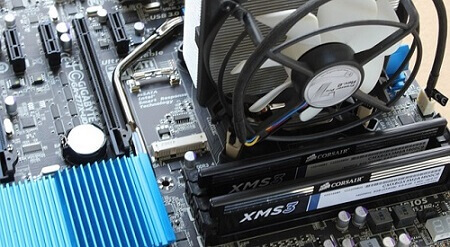A Brief History Of The Computer Storage Systems
The evolution of storage devices in the realm of computer technology has traversed a remarkable journey from its early days to the contemporary era.
In the initial stages of computer evolution, storage devices were colossal objects that necessitated the efforts of multiple individuals for movement and operation.
The landscape has undergone profound changes since those times, ushering in an era of remarkable advancements and innovations.
Embark with us on a historical exploration of storage devices, witnessing the transformative milestones that have shaped their evolution over the decades.
This journey unfolds as a testament to the dynamic progression of technology, illustrating how the once massive and cumbersome storage solutions have metamorphosed into the sleek and efficient devices that grace our computers today.
Punch Cards
Punch cards stand out as one of the earliest forms of storage devices, dating back several decades.
Serving as the inaugural mechanical storage devices, punch cards made their appearance in the 19th century and were initially employed in the programming of mechanical devices such as looms and pianos.
Each punch card possessed the capability to store a total of 80 characters, underscoring the limited data capacity compared to contemporary standards insufficient even for storing a concise Twitter tweet.
During the 1980s, punch cards found widespread use in computer systems, marking a significant chapter in the historical progression of storage devices and their integral role in early computing.
Magnetic Tape Drive
The magnetic tape drive, an alluring storage device comprised of a 120-foot roll of tape, boasted an impressive capacity, capable of holding 230 kilobytes of data.
Originating in Germany, this innovation emerged in the 1950s as a pivotal means of data storage.
Functionally, magnetic tape drives utilized motors to wind the magnetic tape from one reel to another, with a tape head performing tasks such as reading, writing, and cleaning the data.
As technology progressed, a more compact version of the magnetic tape drive gained prevalence in the 1980s, exemplified by formats like VHS and cassette tapes.
Although magnetic tape drives are no longer in common use, their cost-effectiveness has positioned them as a favored choice for data archiving purposes.
Today, they persist in certain contexts, notably for archival storage due to their economical nature.
Magnetic Core
The magnetic core memory, introduced as a novel standard in the MIT Whirlwind computer, revolutionized data storage by employing tiny magnetic rings, commonly referred to as cores.
The principle was straightforward—the more magnetic cores loaded into the memory, the greater the capacity for storing data.
From the 1950s to the 1970s, core memory became a ubiquitous feature in computing works, showcasing its significance in that era.
Remarkably, even in 2004, it was discovered that a magnetic core persisted in use within a telephony control system, underscoring the enduring legacy of this storage technology.
The magnetic core storage device continues to captivate the interest of enthusiasts, serving as a testament to its historical importance and the enduring impact it has had on the evolution of computing.
Hard Disk Drive
The hard disk drive (HDD), affectionately known as the “spinner doctor,” made its debut with an initial storage size of 3.75 megabytes, marking a substantial advancement in data storage capabilities.
Introduced by IBM in 1956, the first HDD was a colossal machine, weighing over a ton and resembling the size of a refrigerator. Its operation involved storing data on one or more rotating metal pallets.
Over time, the HDD has undergone significant transformations. The once behemoth-sized drives have evolved into compact versions integrated into modern computers, with substantially increased storage capacities. Today, HDDs can store data exceeding 400 gigabytes.
Furthermore, the advent of solid-state drives (SSDs), pioneered by Samsung, has further revolutionized storage technology.
SSDs offer enhanced speed and durability, with capacities reaching up to 16 terabytes, showcasing the continual evolution and diversification of storage solutions in the realm of computing.
Floppy Disk
The inaugural floppy disks, crafted by IBM at their San Jose laboratory in 1967, possessed a modest data capacity of approximately 80 kilobytes.
Originally dubbed “flop” due to their uncovered magnetic disks, the term later evolved into “floppy” over time.
As a protective measure, plastic envelopes were subsequently introduced to shield the disks from dirt and contaminants, enhancing the longevity and integrity of the data stored on them.
These floppy disks played a prominent role in the early 2000s, particularly in educational settings, where they were commonly utilized during computer lessons in schools.
Their legacy reflects a pivotal era in the evolution of data storage and the integration of technology into educational environments.
Compact Disk
The compact disk (CD) made its debut in 1982 as a collaborative effort between Sony and Philips.
With an initial capacity of 700 megabytes, CDs revolutionized data storage by utilizing a laser beam focused on the disk’s surface.
Despite a decline in popularity, CDs remain in use today, serving as a reliable medium for various purposes.
Additionally, the digital video disk (DVD) emerged in 1995, marking a pivotal moment in the movie industry.
The introduction of DVDs rendered the outdated VHS obsolete, reshaping how movies were distributed, consumed, and stored.
This transition represented a significant leap forward in both technology and entertainment.
Zip Drive
The first Zip drive, introduced in 1994, marked a significant advancement in data storage, capable of holding over 100 minutes of audio data.
This innovation represented a notable milestone in the evolution of storage devices, offering increased capacity and versatility compared to earlier solutions.
Zip drives gained popularity for their ability to accommodate larger volumes of data, catering to the growing needs of users during that era.
Conclusion
Delving into the history of storage devices provides valuable insights into the evolution of technology.
From punch cards and magnetic tape drives to hard disk drives and floppy disks, each era brought forth innovations that paved the way for the compact and efficient storage solutions we enjoy today, such as pen drives and HDDs.
Exploring the roots of these technologies allows us to appreciate the progress made over time and underscores the continuous drive for improvement in the realm of data storage.
Taking a trip down memory lane enhances our understanding of the technological journey that has shaped the digital landscape we navigate today.







